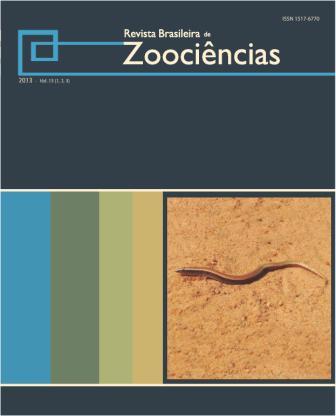Density and spatial distribution of Ocypode quadrata (Decapoda, Ocypodidae) in an insular environment in the state of Rio de Janeiro, southeastern Brazil
Resumo
Ocypode quadrata is a crab species distributed from United States of America to Brazil which is frequently found in supratidal zones of sandy beaches, where they built burrows. The counting of the number of burrows allows sample of both population densities and spatial distribution of individuals. To study these parameters of O. quadrata in Vila Dois Rios, southeastern Brazil, were delimited plots (3.14 m2) to distances from nearest backshore vegetation that varied from 1 to 10 m (60 plots = 188.4 m2). Burrows’ density in Vila Dois Rios was 0.67 burrows/m2 (126 burrows). The density of burrows of this species might vary influenced by local environmental factors (e.g. tides). The distances of the burrows from the vegetation and the diameter of its openings averaged 357.1 ± 272.7 cm (N = 83) and 15.1 ± 8.3 mm (N = 83), respectively. Larger burrow openings were built near the vegetation. It is possible that larger-sized individuals might exclude smaller ones from this region which may have more protection against energy of tides and flooding and a potential higher availability of food resources. Moreover, smaller-sized crabs might occupy areas near the sea due to lesser capacity of excavation than adults and/or to avoid the risk of desiccation due to their high surface/volume ratio. This study in Vila Dois Rios reinforces the occurrence of the construction of burrows near to the vegetation by larger O. quadrata.



